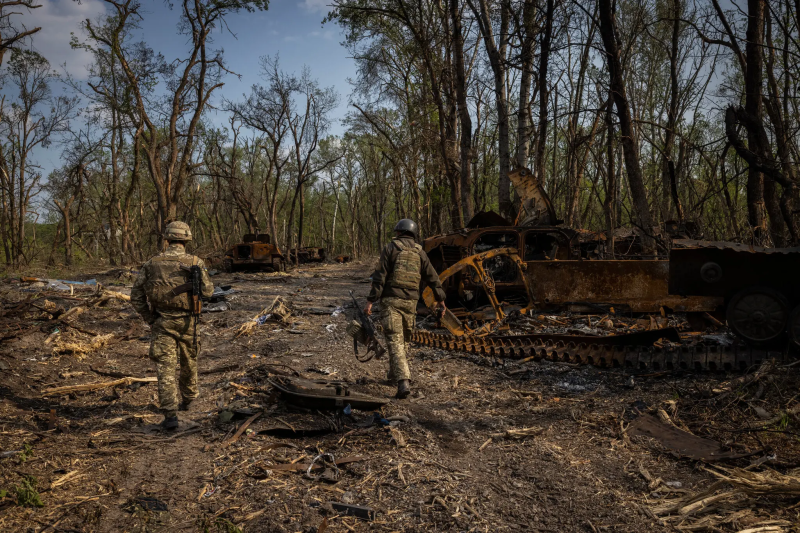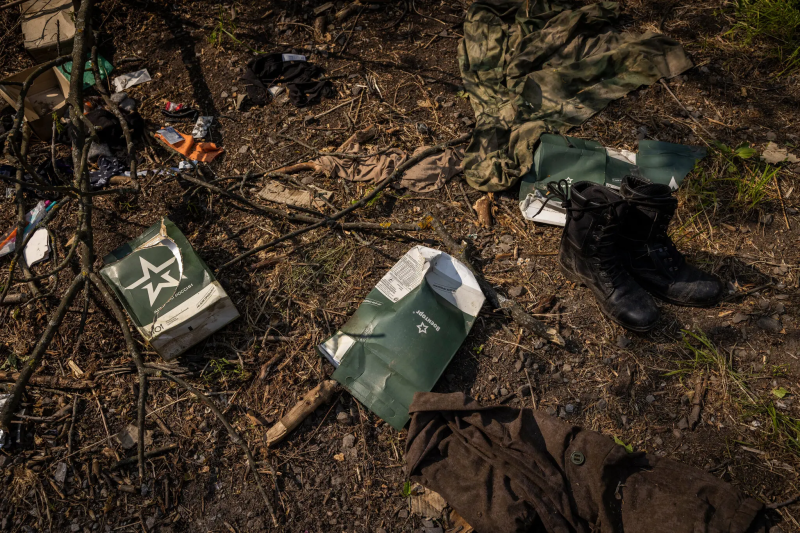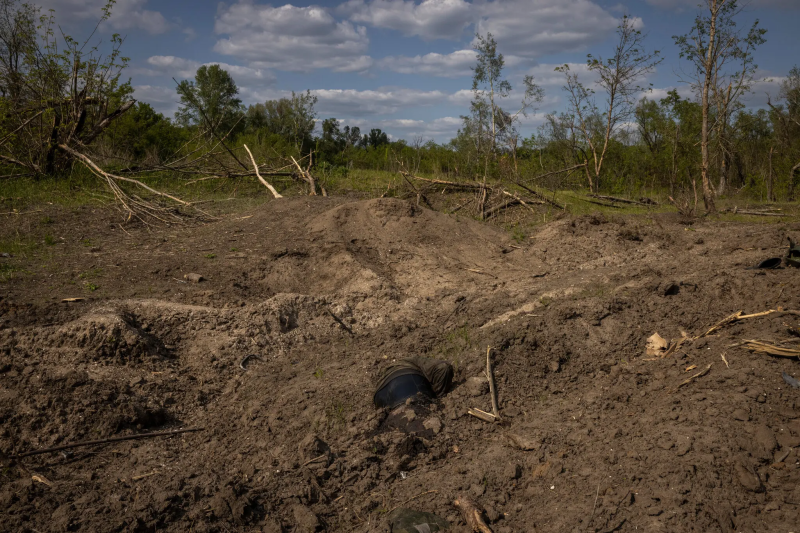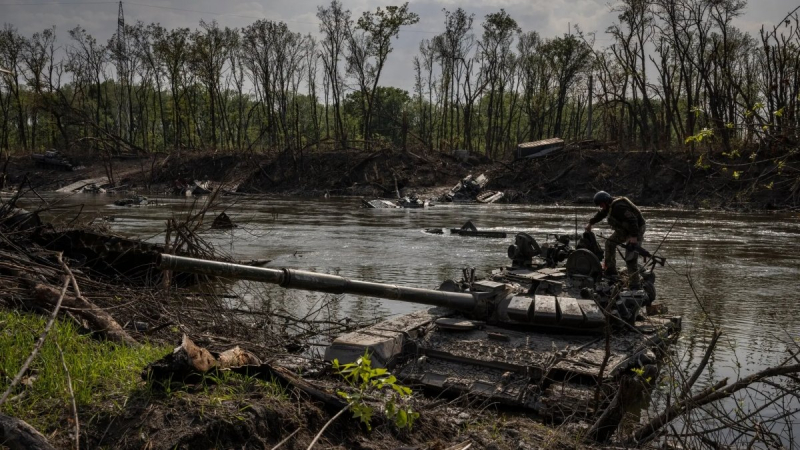
At least 400 Russians died at the crossing in Belogorovka/The New York Times
Belogorovka is a small village on the banks of the Seversky Donets. The Russians organized a pontoon crossing there and tried to cross the river, but it turned into a grave for them.
Now, instead of the crossing, you can see only the scene of the pogrom – blown up tanks, fragments of pontoon bridges and the bodies of Russian invaders who came to Ukraine with the war. At least 400 enemy soldiers died at this place.
All this is thanks to the efforts of the heroic Armed Forces of Ukraine. The invaders, who tried to cordon off Severodonetsk, themselves found themselves surrounded and did not get out of there. Most of them died from the shelling of skillful Ukrainian artillery.
So Belogorovka became the site of one of the fiercest battles and a significant event in this war. American journalists from The New York Times were there, accompanied by the Ukrainian military, to see everything with their own eyes and hear the story firsthand.
“The Russians wanted a small victory. In Kyiv they tried, in Kharkov they tried – they lost. They wanted to win at least something,” a Ukrainian colonel who commanded a counterattack at a pontoon crossing told reporters.
< h3>What happened in Belogorovka
As he explained, the Seversky Donets passing in the East of Ukraine is a natural barrier for Russia to advance through our territories. At the same time, there are few places suitable for a pontoon crossing.

The Ukrainian military showed what was left after the Russians in Belogorovka/Photo by The New York Times
The officer arrived here on May 8, after the Russians turned the pontoons and overturned the soldiers into the forest on the shore. The next day, Ukrainian infantry advanced into the area, but this counteroffensive was repulsed.
Next, the Ukrainians set up a line of defense to encircle the occupiers as they crossed their bridge. At that moment, the invaders received an artillery strike.
In addition, the Armed Forces of Ukraine began to destroy the crossing, setting floating mines a little higher upstream. The water carried them to the pontoons, where the mines worked effectively as planned. So Ukrainian forces managed to blow up 4 separate bridges at the crossing site.

Scattered things of the Russian invaders/Photo by The New York Times
As the colonel noted, the Russians hastily laid new pontoons and transported armored vehicles, but they failed to break through the line of defense of the Ukrainian army. Dozens of vehicles and infantry were trapped and destroyed by our artillery. In addition, the Ukrainians also hit the Russian troops, who were involved in bridge work on the far bank.
What was left after the Russians
Now only the remains of the Russian military, their equipment and personal belongings remain on the banks of the Seversky Donets. The picture is amazing. There is rubbish everywhere – a sleeping bag, a bottle of shower gel, cans of beef, potatoes, Russian tea bags and flip flops.
Scattered belongings of the Russian military / Photo by The New York Times
After the battle, Ukrainian soldiers found a lot of interesting things there. In particular, and the certificate of the medal “For Military Merit” of the Russian colonel, which he was given for participating in a cynical war.
Pistol from a backpack found in an abandoned Russian tank/Photo by The New York Times
A cardboard box was found near a wrecked Russian tank, which was probably used to transport ammunition. On the box was written: “Always believe that something wonderful is about to happen.” Well, what happened to the Russian soldiers in Belogorovka is truly miraculous.

The body of a Russian soldier on the banks of the Seversky Donets / Photo by The New York Times

